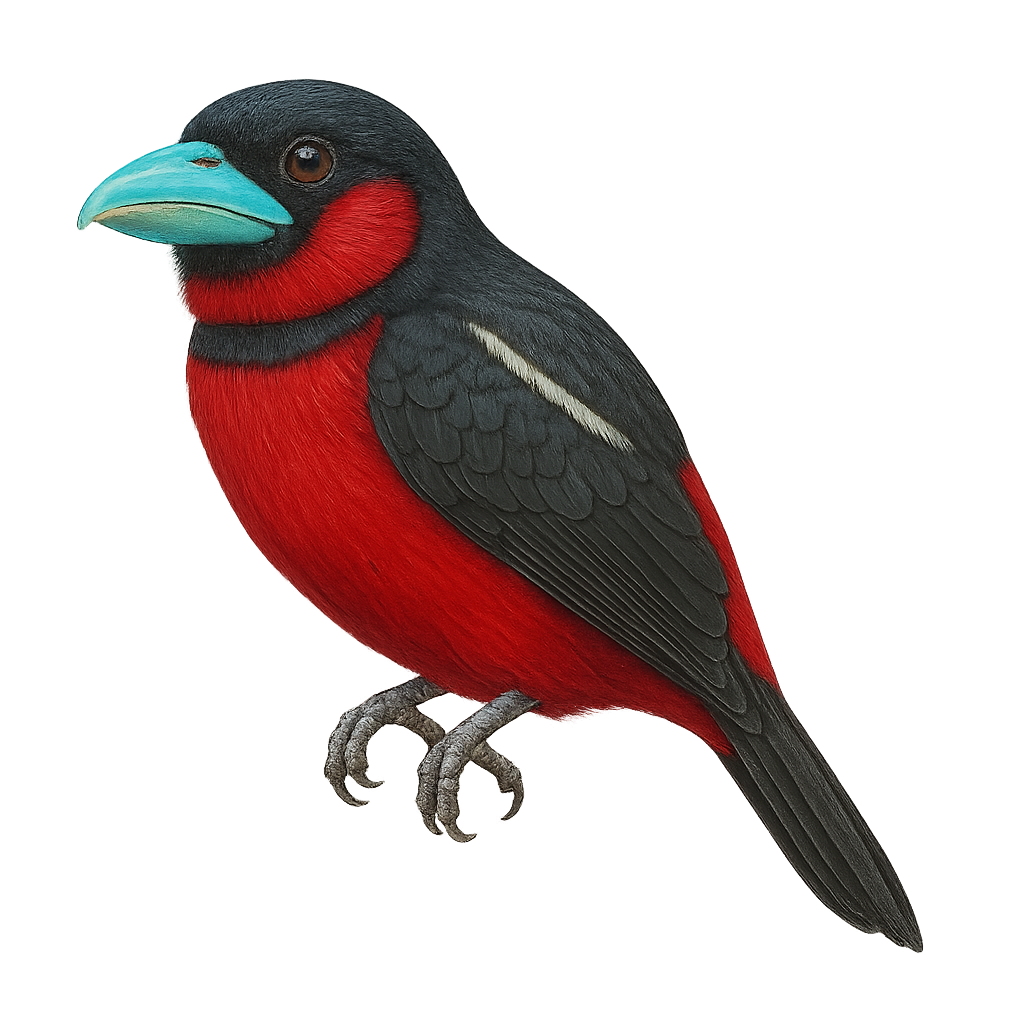Your wildlife photography guide.
Explore the black-and-red broadbill in detail, study its behavior, prepare your shots.
Where to observe and photograph the black-and-red broadbill in the wild
Learn where and when to spot the black-and-red broadbill in the wild, how to identify the species based on distinctive features, and what natural environments it inhabits. The WildlifePhotographer app offers tailored photography tips that reflect the black-and-red broadbill’s behavior, helping you capture better wildlife images. Explore the full species profile for key information including description, habitat, active periods, and approach techniques.
Black-and-red Broadbill
Scientific name: Cymbirhynchus macrorhynchos

IUCN Status: Least Concern
Family: EURYLAIMIDAE
Group: Birds
Sensitivity to human approach: Suspicious
Minimum approach distance: 10 m
Courtship display: April to July
Incubation: 17-18 jours
Hatchings: April to August
Habitat:
Tropical forests, mangroves, wetlands
Activity period :
Primarily active during the day, with peak activity in the morning and late afternoon.
Identification and description:
The Black-and-red Broadbill is a striking bird known for its vibrant plumage and large bill. It features a vivid combination of black and red body with a broad, pale blue bill. This bird is primarily arboreal and found in the tropical forests of Southeast Asia, including Thailand, Malaysia, and Indonesia. It feeds mainly on insects and small fruits, which it skillfully captures with its powerful bill. The Black-and-red Broadbill is often seen in pairs or small groups and is known for its melodious calls. Although its habitat is threatened by deforestation, it is currently classified as Least Concern by the IUCN.
Recommended lens:
400 mm – adjust based on distance, desired framing (portrait or habitat), and approach conditions.
Photography tips:
To photograph the Black-and-red Broadbill, focus on dense forest areas where it is most active. Use a telephoto lens of at least 400mm to capture sharp images from a distance, as this bird can be suspicious. Be patient and discreet, blending into the environment to avoid disturbing it. Take advantage of moments when it is feeding or singing to capture dynamic shots. The natural light of morning or afternoon will highlight the vivid colors of its plumage.
The WildlifePhotographer App is coming soon!
Be the first to explore the best nature spots, track rutting seasons, log your observations, and observe more wildlife.
Already 1 439 wildlife lovers subscribed worldwide

